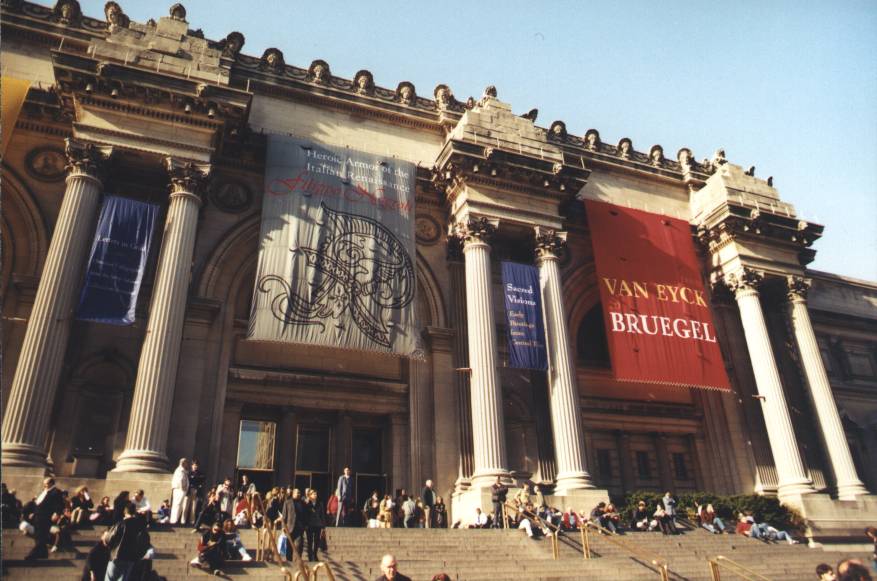
NEW YORK—The New York
Power Authority (NYPA) and the City of New York today announced that they have
completed a $1.1 million energy efficiency upgrade at the Metropolitan Museum
of Art that improves the lighting and steam heating systems at the world-famous
cultural institution. Funding for the project was provided by the New York City
Department of Citywide Administrative Services (DCAS) through Mayor Michael R.
Bloomberg’s sustainability initiative, “PlaNYC.”
“The recently completed
energy-saving project at the Met underscores the importance Governor Cuomo is
giving to energy efficiency, as highlighted by his newly introduced ‘Build
Smart NY’ initiative for state public facilities,” said Gil C. Quiniones, NYPA president
and chief executive officer. “The Power Authority is one of the key state
organizations helping to carry out the Governor's vision to cut electric bills
and reduce carbon emissions through cost-effective energy efficiency projects.”
“This project will save
$120,000 per year on electricity and steam costs,” said Edna Wells Handy, DCAS
commissioner. “DCAS is proud to lead energy efficiency efforts in keeping with
the Mayor’s PlaNYC initiatives, which are reducing greenhouse gas emissions.”
“The Museum makes every
effort to bring state-of-the-art technology to these historic buildings and we
appreciate the Power Authority’s assistance with these improvements,” said Eric
Wrobel, chief electrician for the Metropolitan Museum.
The Power Authority’s
energy efficiency group, in cooperation and coordination with both DCAS’ energy
management and the museum’s facilities management staff, spearheaded the
improvements, which included replacing much of the lighting in the museum’s
office and storage areas with energy-saving, compact fluorescent fixtures.
Other measures included extensive insulation of the museum’s steam pipes to
reduce heat loss.
NYPA has partnered with
DCAS on similar energy efficiency programs at many of the city’s cultural
institutions and public attractions, including the Brooklyn Children’s Museum,
the New York Botanical Garden and the Bronx Zoo. Those are among thousands of
tax-supported facilities in the city that benefit from lower cost NYPA
electricity, in addition to the value-added services that the Power Authority
provides to reduce energy use.
“Across the five
boroughs, historic and modern cultural facilities are leading the way to
achieving the city’s energy efficiency goals through retrofits and pioneering
use of new technologies,” said New York City’s Department of Cultural Affairs
Commissioner Kate D. Levin. “Thanks to the New York Power Authority and the
Mayor’s efforts, the Metropolitan Museum of Art is one more example of an arts
organization serving the public with sustainable building improvements, and we
were delighted to work with our colleagues in government on this dynamic
project.”
Over the last two
decades, NYPA has teamed with the City of New York on energy efficiency and
clean energy projects at more than 1,000 facilities, for annual savings of more
than $55 million and the lowering of greenhouse gas emissions by 337,000 tons a
year.
NYPA is at the forefront
in implementing a number of Governor Cuomo’s energy efficiency initiatives,
most prominently his Build Smart NY plan, which will provide substantial
savings to taxpayers, create new jobs from capital investments in clean energy
technologies, and improve air quality throughout the state.
The Power Authority
plans to finance a total of $800 million in energy efficiency and clean energy
improvements over the next four years to support the Governor’s issuance in
December 2012 of Executive Order 88, which calls for an increase in energy
efficiency in state government buildings by 20 percent by 2020, and for similar
initiatives at county and local government facilities.
NYPA recovers its costs
by sharing in the resulting electric bill savings with the public
facilities. Once fully recovered over several years’ time, the
beneficiary keeps all of the savings, freeing up money for their essential
services.
On April 22, 2007, Mayor
Bloomberg released PlaNYC, a comprehensive, long-term sustainability plan to
enhance the physical environment of New York City. PlaNYC contains 10 goals
focused on land use, infrastructure, transportation, energy, air and water
quality and climate change, as well as 127 initiatives to achieve the goals.
One of these initiatives instructs the city to lead by example and reduce
energy consumption and greenhouse gas emissions from government buildings and
operations by 30 percent by 2017 (“30 x 17”).
Following the release of
PlaNYC, Mayor Bloomberg signed Executive Order 109, which formalized the
organizational infrastructure to lead the 30 x 17 effort; created the Energy
Conservation Steering Committee to oversee and manage initiatives; provided
funding for the plan; and charged the Steering Committee with creating a
long-term action plan to achieve the reduction goal.
In July 2008, the
Steering Committee released a long-term plan to reduce energy consumption and
greenhouse gas emissions of municipal buildings and operations. The plan
provides a roadmap of the best emissions opportunities to achieve the 30 x 17
goal. DCAS energy management oversees implementation of the plan.